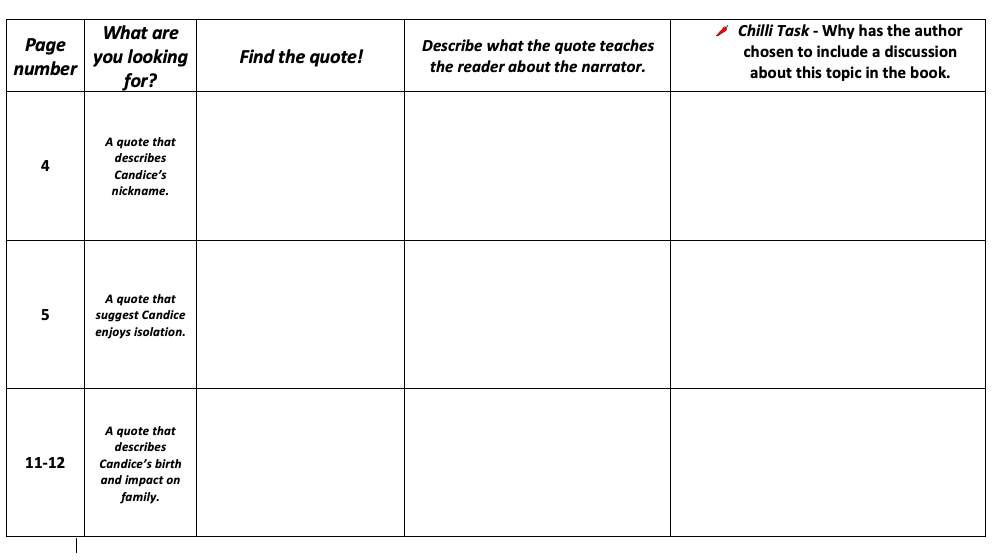The Situation
Your students find it difficult to locate information in a written text.
The Solution
Retrieval charts are a great way for students to gather information in preparation for short answer responses or essays.
They are a little bland to look at, but they are very effective in dragging out different types of thinking. Using Bloom’s Taxonomy, you can consider the depth of thinking you would like students to partake in. For example, they start with locating information and move up to analysing and evaluating.
Here is a retrieval chart that I constructed for the book, My Life As An Alphabet, by Barry Jonsberg.

On the righthand side, I have the page number recorded. This is where they need to look first. They use the ‘what are you looking for?’ column to know what information that they are looking for. Afterwards, they record the relevant quote (Third column) and then record what the quotes teaches the reader about the narrator. This retrieval chart is focused on characterisation, but you might like to look at different narrative conventions. Finally, the last column asks students to consider why the author has chosen to explore a particular topic in the text.
In this retrieval chart, students need to choose the narrative convention that they would like to focus on. From their they choose the keywords (third column) and then explain what the quote suggests.

Due to the depth of understanding that this chart requires, I have provided examples to students so that they have a starting point to write their own response.
As I say to students, a retrieval chart, when flipped vertically is almost identical to a paragraph – it outlines the evidence and explanation. The remaining component of the paragraph is the topic sentence that can be written from the chosen narrative convention.
Students would also benefit from using a sentence starters to begin their writing. I have included one at the top of the columns to guide students.
2 thoughts on “Retrieval Charts”